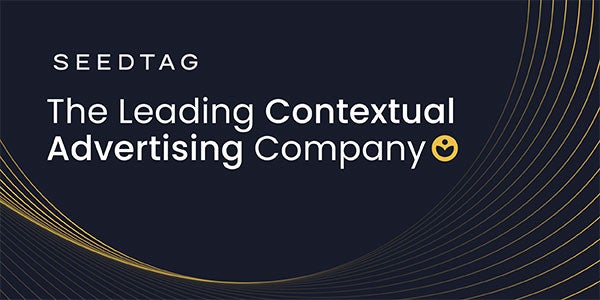Right now, I’m shopping online for a very important purchase: I’m trying to find the right remedy for my allergies. Your best chance of getting my click isn’t serving me an ad for the socks I bought earlier today or the car my demographics suggest I might buy. The smart move is to serve me an ad that helps me choose something that will take care of my allergies.
But what if you could go further? If you could understand how the content I’m viewing fits within my buying journey (decision stage – ready to buy), use the context of my actions to predict my habits and behaviors, even use things like my scrolling speed to not just serve up a highly relevant cat food ad but put it in the perfect spot on the page, then tailor the creative to all that context?
If you’re a marketer, pay attention: These capabilities redefine contextual targeting as the most exciting tool in the performance advertising world.
AI-powered contextual brings predictive intent insights to performance campaigns
The promise of contextual was always there. We all intuitively know that what a person is doing right now reveals what they care about better than their demographics. But modern contextual targeting uses AI and machine learning to break through previous limitations – bringing new levels of comprehension of personas, content accuracy, scalability and brand safety.
For example, natural language processing (NLP) models bring a much deeper and more human understanding of the content of a page, unraveling the nuances that separate sick (illness) from sick (cool). AI models can also understand where page content lives within the universe of content on a topic – and how that content typically fits within the buying journey (awareness, consideration, decision).
But here’s where things get really cool from a performance advertising standpoint: The latest generation of contextual tech goes well beyond the content of the page to comprehend the context of the target’s interaction – and uses that context to understand intent.
AI looks at everything from the type of content (and where it fits within the buying journey) to on-page actions and even time of day to not just understand the “what” of intent but when intent is highest. AI can even use on-page behaviors to serve up better ad experiences – for example, using scrolling speed to place an ad where it’s likely to get meaningful attention and engagement without being disruptive.
Neural networks drive more efficient ad spend
If you enjoy a deep-dive like me and want to know how this actually works, here’s the distilled explanation: The most sophisticated contextual targeting tools now use neural networks that can almost instantly run the numbers on every possible action path. Then it uses that data to build high-probability decisioning models and probabilistic journeys to confidently predict a persona’s next action – whether they’ll click to visit your site, whether they’ll take a second-site action, how much time they’ll spend on your site, etc.
The AI uses that predictive insight to automatically double down and serve up more ads to high-probability personas – or pull back (and perhaps try a different type of ad placement, time of day or creative) on low-probability personas.
Contextual has gone from “cast a wide net with keywords and hope for the best” to an incredibly sophisticated, data-driven approach that naturally drives more cost-effective ad spend through privacy-compliant cohort modeling, network trends and domain-level insights.
Ad spend is moving to contextual – but it’s not because of privacy
Before I go any further, let me address the elephant in the room: Modern contextual is no “next-best alternative” to cookie-based targeting. Privacy is inherent in contextual targeting – yes – but brands and agencies are turning to modern contextual because it works.
According to a Nielsen study conducted with Seedtag, contextual targeting drives 32% more consumer actions – and consumers are 60% more likely to click on the ad to visit the product website – compared to demographic targeting.
These results shouldn’t be surprising. We know the perfect performance ad experience is personalized, seamless and assistive. And while ad tech has come a long way on the first two points, there are still precious few times when an ad is genuinely helpful. The problem is targeting: To truly help me, understanding who I am is much less important than understanding what I care about right now.
Transparency is key: It’s not what you do; it’s how you do it
We’re already seeing a surging undercurrent of ad spend shifting from behavioral to contextual targeting. More and more marketers are hopping on the bandwagon, making big investments in performance campaigns that use these AI-driven contextual targeting capabilities. New contextual targeting tools pop up every day (even Google is getting into the game), and the truth is you can pick any one of them, plug it in and likely get some pretty impressive results.
But I want to leave you with one final piece of advice: It’s not what you do; it’s how you do it. Because if you can’t understand how you got to those results, then you can’t replicate it. And if you can’t replicate it, then it’s not a sustainable strategy for your business. Only when you have access to the huge amounts of transparent data that only a top contextual performance partner provides can you make those data-driven decisions that will make your brand successful.
This really just echoes a growing theme across the ad tech world: Transparency is key. There are a lot of powerful tools available today, but marketers need to build an ad tech stack with partners that give full transparency. Not just for the sake of privacy, but so you can build replicable, scalable strategies to drive the success of your business at all levels of the funnel.
For more articles featuring Brian Danzis, click here.















